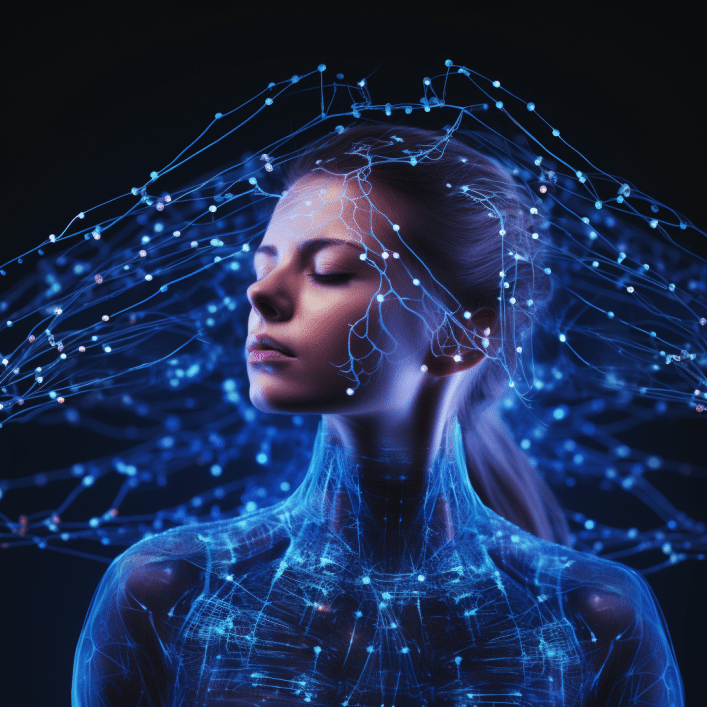Vagus nerve stimulation (VNS) is an emerging form of brain stimulation showing promise for treating depression.
Though still considered experimental, VNS has a long history dating back over 100 years.
Recent advances are unlocking its potential as a new tool for mood disorders.
Key Facts:
- VNS stimulates the vagus nerve, which connects to emotion regulation centers in the brain like the locus coeruleus.
- VNS was originally developed to treat epilepsy but was later found to also have antidepressant effects.
- VNS was FDA approved for treatment-resistant depression in 2005 based on clinical trials.
- VNS may work by increasing serotonin, norepinephrine, and neuroplasticity.
- New research is looking at optimizing VNS parameters and testing variants like non-invasive transcutaneous VNS.
Source: Neuromodulation
The Origins of VNS: From Carotid Compression to Electrical Stimulation
The story of VNS starts in the late 1800s with neurologist James Leonard Corning.
At the time, seizures were believed to be caused by cerebral blood flow problems.
Corning developed a fork-like device that could apply pressure to the carotid arteries in the neck to control blood flow.
This “Corning Fork” was used as both an acute treatment to stop seizures and a preventative therapy for epilepsy.
Though misguided in its rationale, the Corning Fork serendipitously provided a type of primitive vagus nerve stimulation through its compression of the carotid sheath surrounding the nerve.
This laid the groundwork for the direct electrical stimulation of the vagus nerve that would emerge decades later.
In the early 20th century, research began to elucidate the function of the vagus nerve more precisely.
The vagus was found to have both sensory and motor functions, transmitting signals to and from organs like the heart and gut.
Its stimulation was shown to cause changes in electrical brain activity.
Several decades later, neurocybernetic prosthesis pioneer Jacob Zabara capitalized on these revelations.
Building on the work showing vagus nerve stimulation (VNS) could modify cortical excitability, Zabara developed an implantable device that delivered patterned electrical stimulation to the vagus nerve to control seizures.
This innovation spearheaded the modern clinical use of VNS, leading to its FDA approval for epilepsy in 1997.
But along the way, a serendipitous discovery was made that would add a new indication for this emerging therapy.
Mood Effects Emerge: From Epilepsy to Depression
Though approved for otherwise treatment-resistant epilepsy, the initial VNS trials revealed something surprising – in addition to reducing seizures, it also improved patients’ moods.
Follow-up studies quantified these antidepressant effects.
In 2000, the first prospective pilot study of VNS for major depression was published.
It demonstrated symptom improvements in treatment-resistant patients.
Over the next several years, additional trials cemented the link between VNS and elevated mood.
By 2005, enough evidence had accumulated for VNS to gain FDA approval for treatment-resistant depression (TRD).
This new indication was a major milestone, representing psychiatry’s embrace of neurostimulation therapies.
But debates remained about exactly how VNS exerted its antidepressant effects.
Unlocking the neurological mechanisms involved would be key to optimizing its use.
Deciphering VNS Mechanisms of Action: Neurochemistry and Neuroplasticity

VNS is believed to alleviate depression by modulating activity in emotion regulation centers in the limbic system and brainstem.
This is accomplished through the vagus nerve’s connections to these regions.
Specifically, the vagus projects to the nucleus tractus solitarius in the brainstem.
From there, it activates locus coeruleus and raphe nuclei involved in norepinephrine and serotonin systems.
It also links to the amygdala and prefrontal cortex.
Studies have found VNS causes increases in serotonin, norepinephrine, and GABA.
PET imaging reveals it increases activity in the prefrontal cortex and decreases activity in the amygdala.
Beyond neurotransmitters, VNS may also encourage neuroplasticity in the hippocampus and other areas.
This could help reverse damage caused by depression.
Together, these diverse effects likely contribute to improving mood, though more research is needed to clarify how VNS parameters can be tuned to enhance its effects.
Optimizing VNS: Finetuning Parameters and Dosing
While VNS has demonstrated antidepressant effects, there is still little consensus on the best way to administer it.
Most evidence suggests longer-duration stimulation produces superior results.
Early clinical trials using VNS for depression employed stimulation for just 10-12 weeks.
But later studies found cumulative benefits continue to accrue over months-long timescales.
This suggests consistent, pulsed stimulation is key.
Dosing considerations like amplitude, frequency, pulse width, duty cycle and more also remain unclear.
Higher intensities seem to increase efficacy, but there are likely optimal ranges beyond which returns diminish.
Ongoing trials are investigating these parameters in depth.
Making VNS More Accessible: From Invasive to Non-invasive
Beyond fine-tuning its administration, advancements in the pipeline could also make VNS more accessible.
Historically, VNS has required surgical implantation of a stimulator device.
But new non-invasive approaches are being developed.
Transcutaneous VNS (tVNS) applies stimulation via electrodes placed on the ear, targeting the auricular branch of the vagus nerve.
Early results show it may reproduce some of the effects of traditional VNS.
tVNS offers a low-cost, self-administered alternative.
However, optimal protocols remain unclear.
More testing is needed to determine if it can match or exceed the benefits of invasive VNS.
Ongoing Trials and the Road Ahead
Over a century since its inception, VNS continues to hold promise as an antidepressant intervention.
The technology has come a long way from rudimentary mechanical carotid compression.
Yet work remains to firmly establish its efficacy, uncover mechanisms, and optimize protocols.
Large-scale clinical trials are underway seeking to address these open questions.
Equally important are efforts to develop non-invasive, patient-friendly devices democratizing access to this unique form of neurostimulation.
The next decade promises to be an exciting one for vagus nerve stimulation and its role in treating those suffering from depression.
References
- Study: A comprehensive review of vagus nerve stimulation for depression
- Authors: Christopher W. Austelle et al. (2022)







